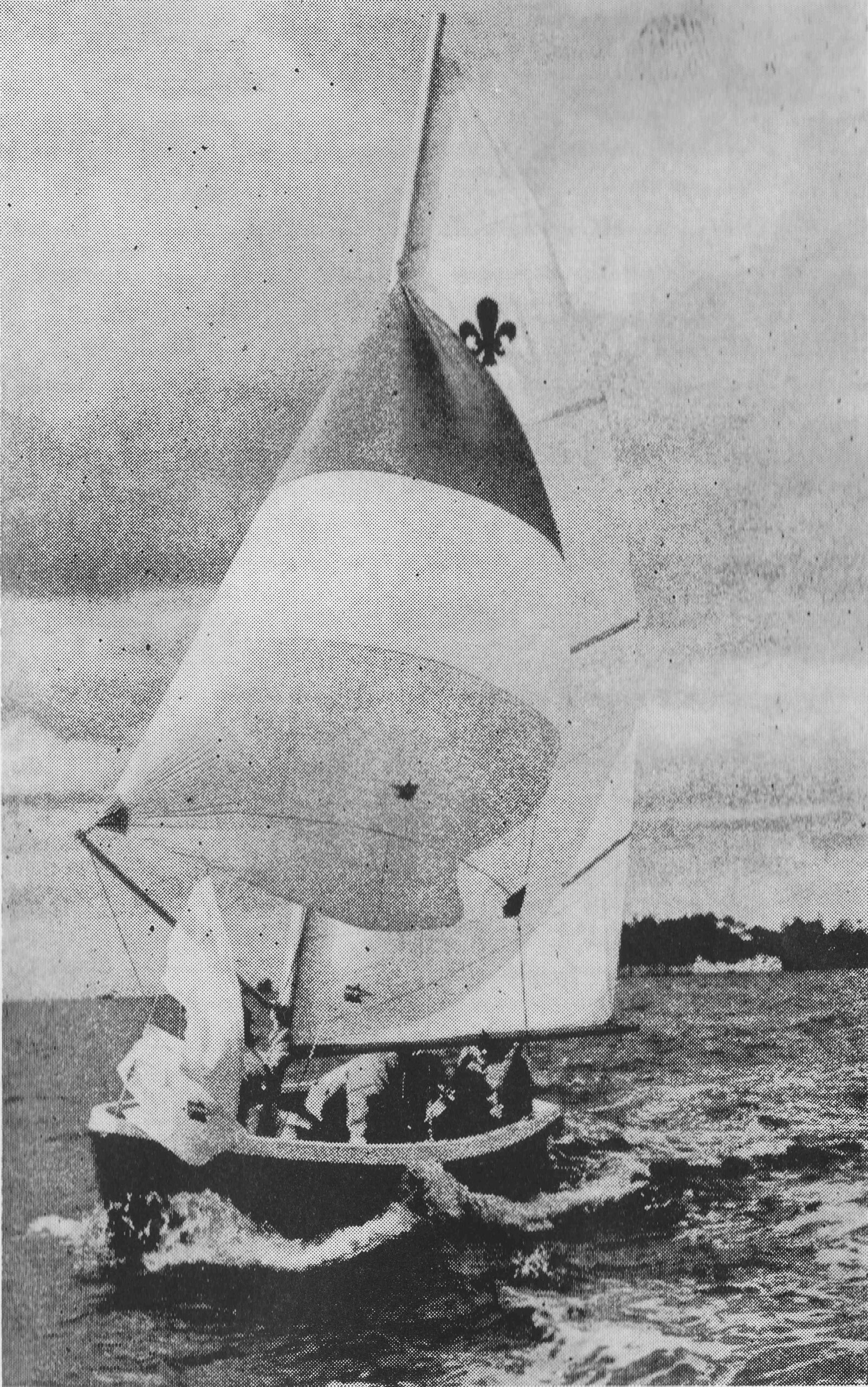Signalling
The ability to send and receive a simple message by signal is important to any boat’s crew away from the ship, and for this reason signalling is included in this book.
Sea Scouts are concerned with three methods of signalling — Semaphore and Morse Codes, and the International Code of Signals.
International Code of Signals
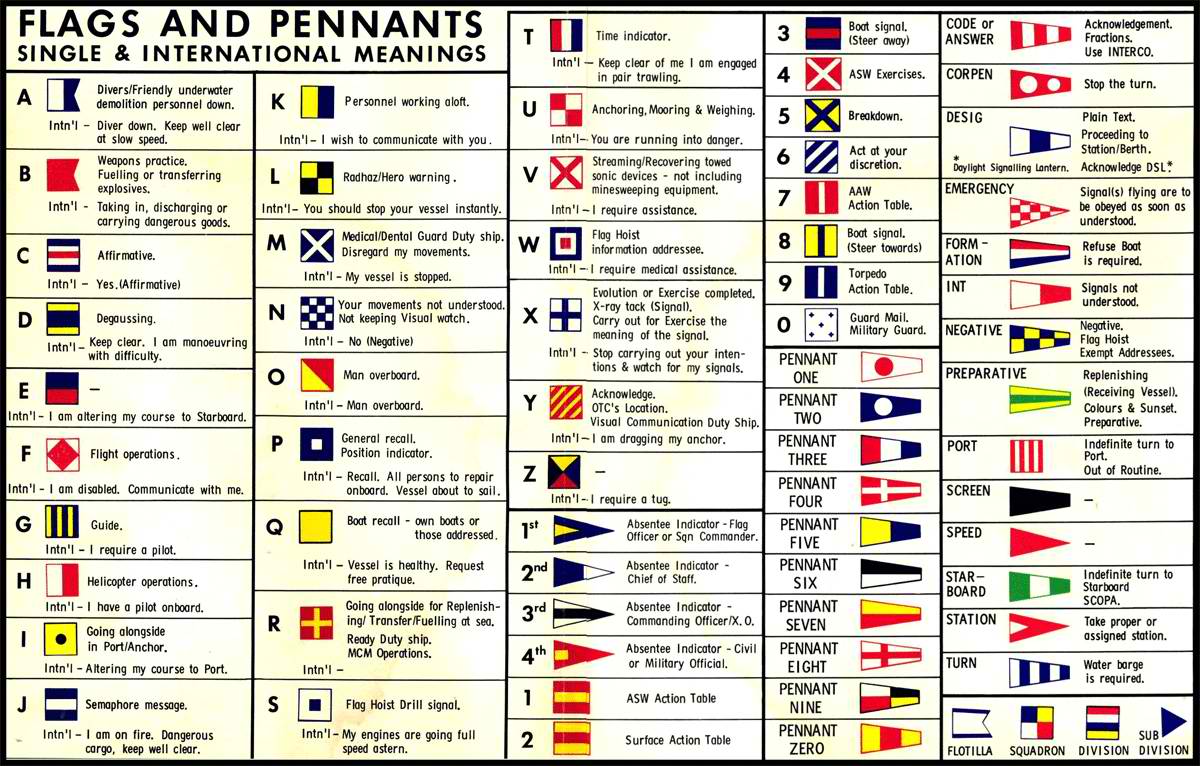
The International Code flags used for flag signalling consist of 26 letter flags, 10 numeral pennants, three substitutes or repeaters, and a code and answering pennant, as shown in the accompanying illustration.
The revised Code which has been adopted by the Inter-Governmental Maritime Consultative Organisation came into force on 1 April 1969.
The International Code of Signals caters primarily for situations relating to safety of navigation and persons, and overcomes language difficulties. It is suitable for transmission by all means of communication, including radiotelephony and radiotelegraphy, thus obviating the need for a separate radiotelephone code and dispensing with the present Volume II for radiotelegraphy.
The Code embodies the principle that each signal has a complete meaning.
The Code Book is divided into the following sections:
(a) Table of contents.
(b) General section.
(i) Distress — Emergency
(ii) Casualties — Damages.
(iii) Aid to Navigation — Navigation — Hydrography. (iv) Manoeuvres.
(v) Miscellaneous, i.e., cargo, crew, fishery, pilot, and port.
(vi) Meteorology.
(vii) Communications.
(viii) Pratique messages.
(c) Table of complements.
(d) Medical section.
Answering Pennant: The answering pennant is hoisted at the “dip” by the ship addressed and hauled close-up when the message has been understood.
Substitutes: Substitutes are used to repeat any flag in a hoist, the first substitute repeats the top or first flag of a hoist, the second substitute repeats the second flag, and so on. For example, a plain language hoist reading SLOOP would appear as S L O 3rd sub P.
Single Flags: Each flag has a meaning when flown singly, and many will have noticed tankers discharging flying Flag B, meaning “I am taking on or discharging or carrying dangerous goods.
Two Flag Hoists cover a great many messages of importance at sea dealing with rendering assistance, communicating with aircraft, danger messages, fire at sea, weather, etc. They are fully listed in the Code Book.
Four Flag Hoists indicate the ship’s call sign or signal letters. The first letter or top flag of the hoist indicates the nationality. For instance, British ships will have flags G or M uppermost and New Zealand ships will have flag Z uppermost. A list of New Zealand call signs is given in the N.Z. Nautical Almanac.
A full set of code flags is expensive to buy and in most cases Troops will have to seek parent assistance to make a set; however, even a small Troop of twenty Scouts means only two flags from each parent, and the Scouts can do the necessary rope work.
Many Scout Sections use individual flags as boat recalls and another flag as a general of “All boats” recall. To make sure the coxswain is in no doubt about his recall flag it is as well to paint these on a small plaque and fasten it on the inside of the transom.
Dressing Ship is an ornamental display of Code flags in addition to the ship’s colours flown on special occasions, such as the Queen’s Birthday or Anniversary Day. Signal flags are the only flags used for this purpose, and colours are not included among the code flag hoists. Although flags can be used in any order for this purpose, it is as well to ensure that they do not spell anything you may regret later. It is usual to evenly place the pennants among the flags.
Semaphore
This is probably the most useful form of signalling for Sea Scouts and the code is generally taught to Scouts. The procedure for sending a signal is very simple. The sender makes the attention signal “U”, and to attract attention the flags can be waved up and down if not acknowledge immediately. The receiver replies with “C”. The sender then transmits the message in plain language, all numbers are spelled out in full, any mistakes are erased with a succession of “E’s”. The receiver replies with “C” to each word received, if no “C” is sent the sender repeats the word. “AR” is used to end the message.
Here is an example:
Sender Receiver
ATTENTION C
INVESTIGATE C
SMALL C
BOAT C
ADRIFT C
ONE C
MILE C
EAST C
KAU C
POINT C
AR C
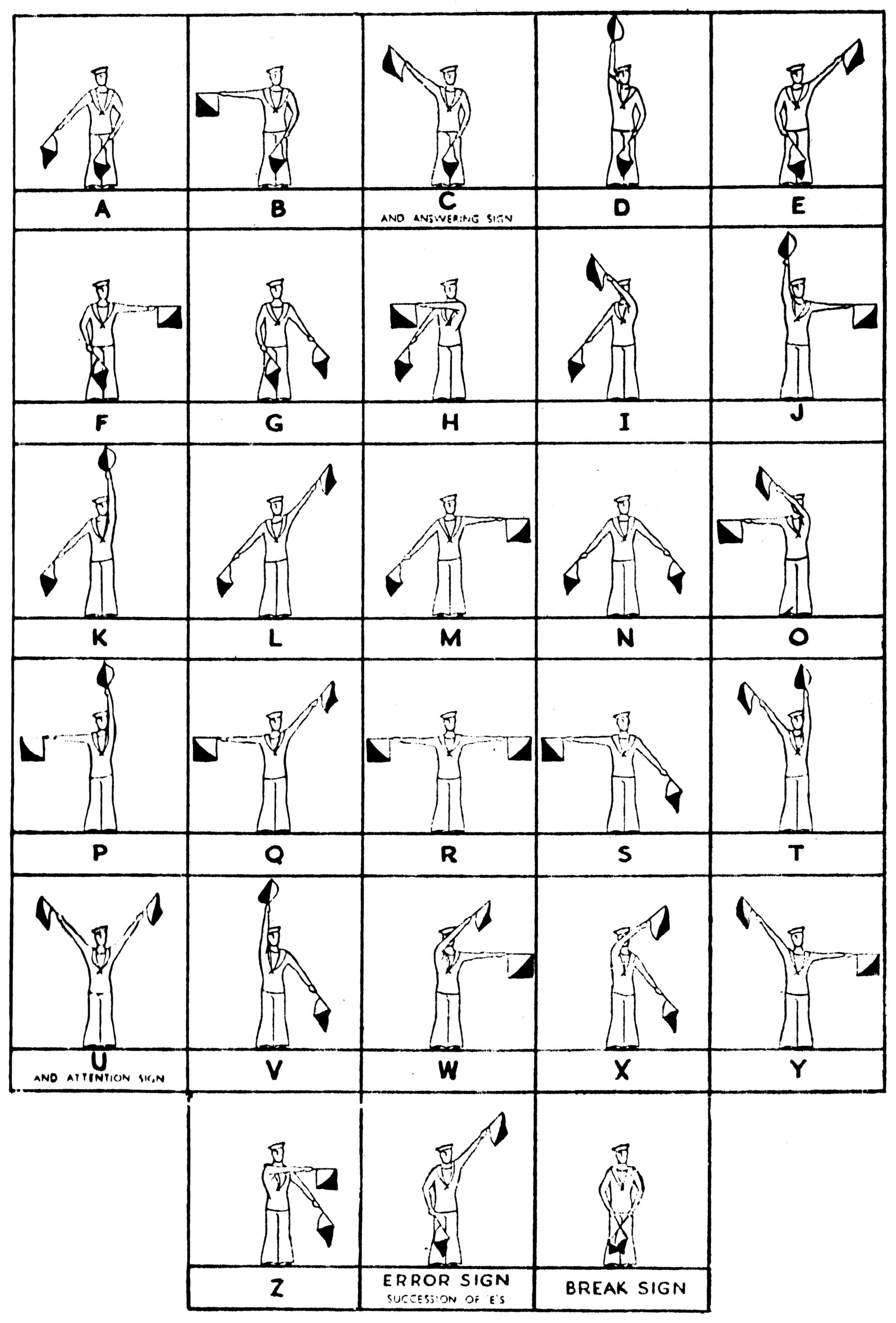 Morse Code
Morse Code
The Morse Code may be transmitted by wireless telegraphy, flag, and by lamp. In most instances the cost of an Aldis lamp required for daylight signalling will be found too great for the average Sea Scout Troop and Morse will be confined to the buzzer in H.Q. and perhaps by light at night. It is necessary to have a working knowledge of the code because it was the most widely used method of visual signalling.
Procedure and Special Signals
Sender: AA AA AA. General Call.
Receiver: TTT. Answer.
Sender: DE then identity signal or name.
Receiver: Reply with own identity signal or name.
Sender: Repeats back receiver’s name.
Sender: Text of message in plain language or code groups.
Receiver: T on the receipt of each word or group.
Sender: AR at end of message.
Receiver: R at the end of message.
Sender: EEEEEE. Erase sign if a mistake is made.
Sender: RPT after message to show he will repeat the message, or he wants the receiver to repeat back the message.
Signs used with the repeat sign:
AA Repeat all after –
AB Repeat all before –
WB Repeat word before –
WA Repeat word after –
BM Repeat all between –
Morse Code and Phonetic Alphabet
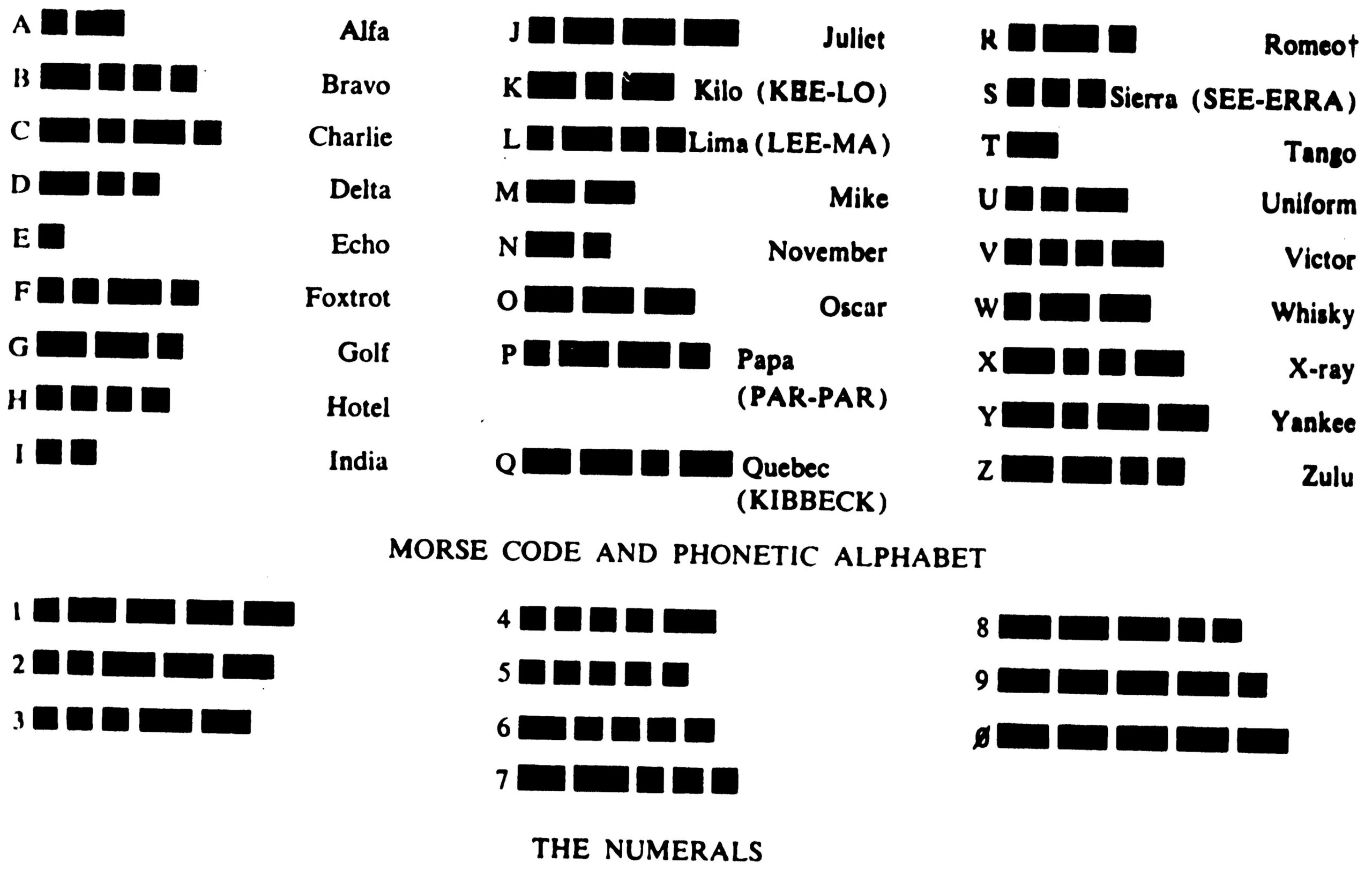
Morse Signalling by Hand Flags
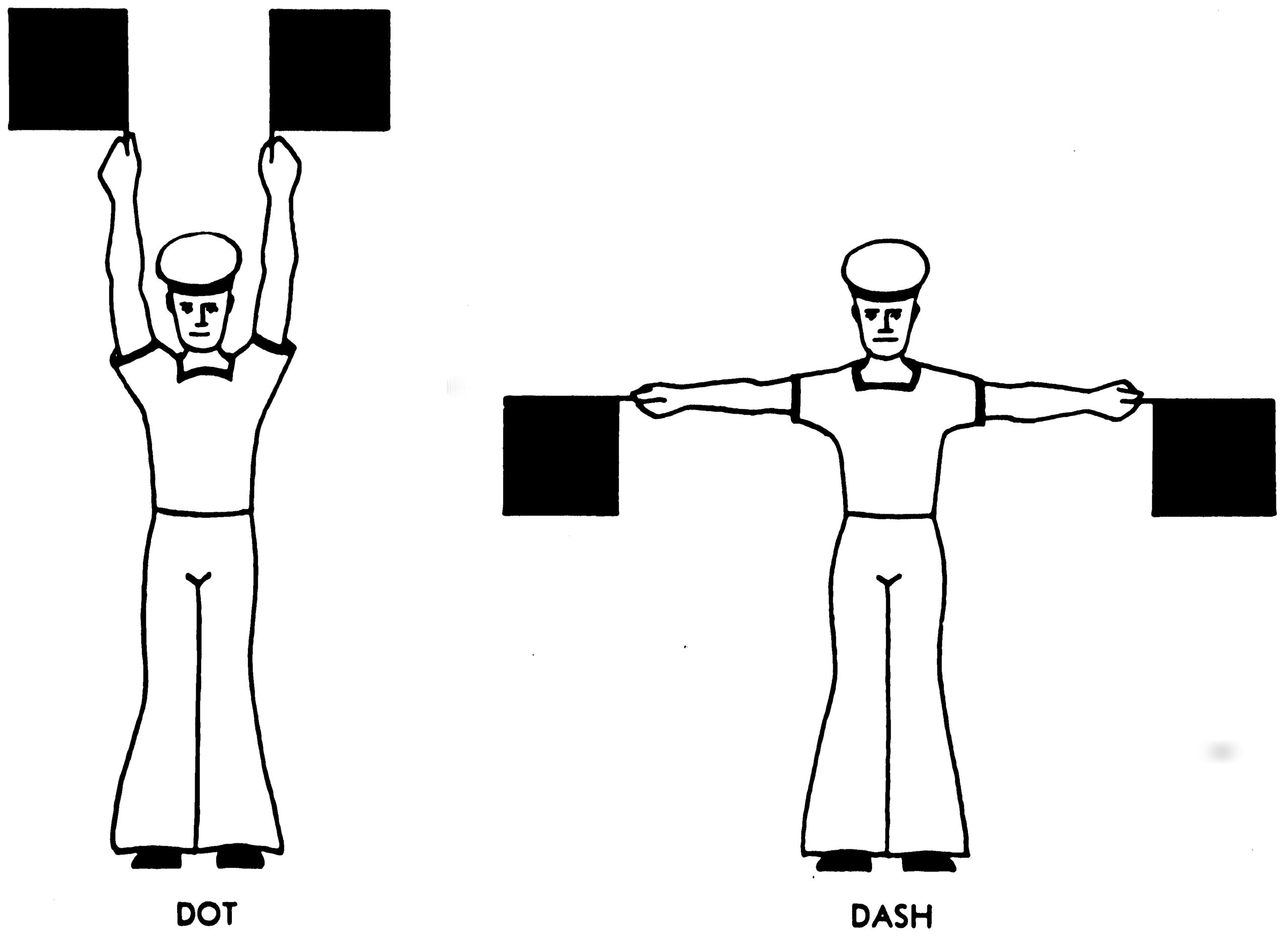
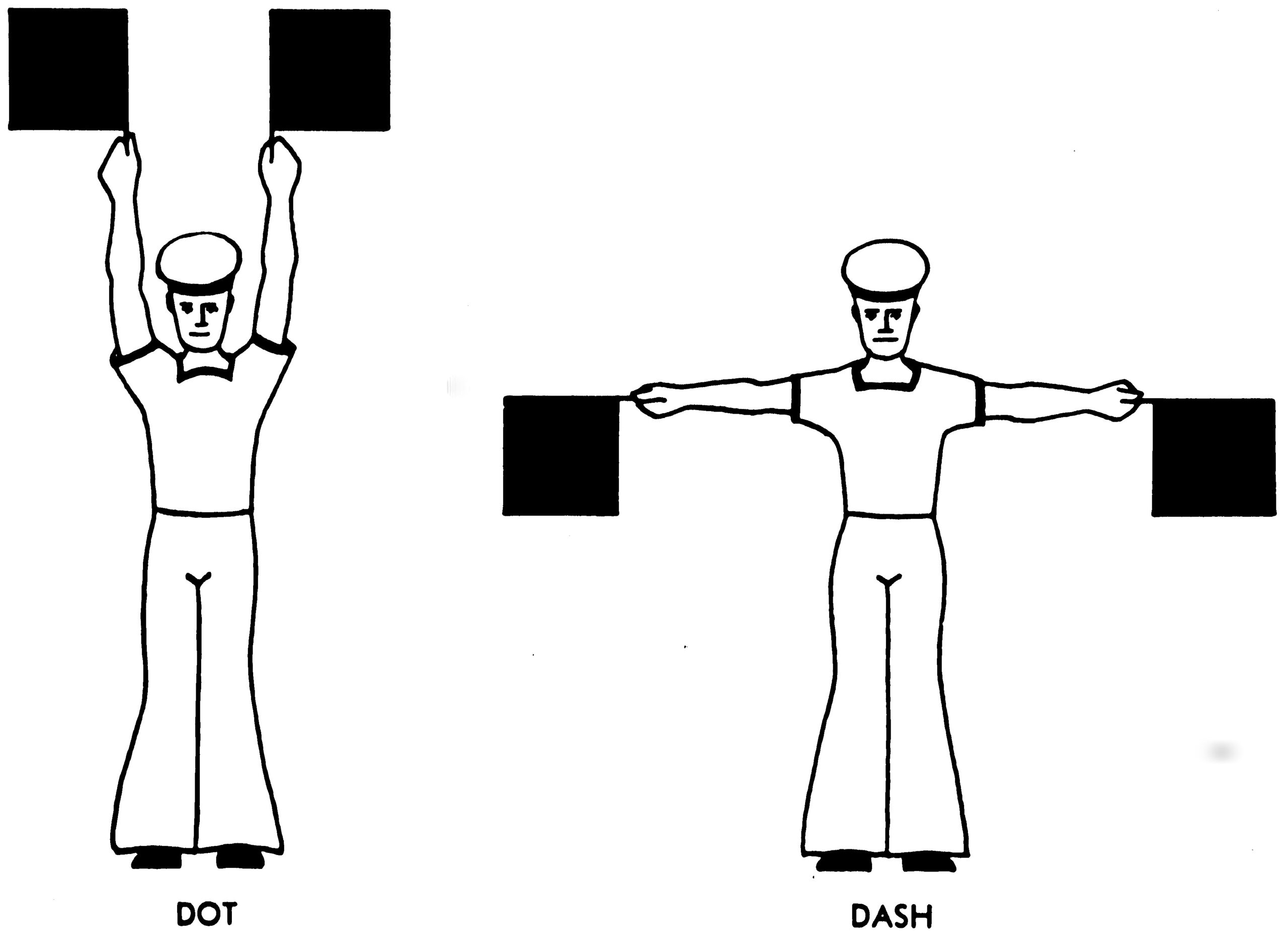 Radio Telephones
Radio Telephones
An R/T or V.H.F. set is only as good as the operator. He should know what to do in an emergency, what local station to contact and how to make full use of the available services. All operators should have an R/T licence.
In this age of electronics, no seafarer at sea need feel alone. New Zealand’s radio stations scattered around the coastline are constantly receiving and sending out information which ranges from distress calls and medical advice to navigational warnings and timely weather broadcasts.
Every year accidents happen at sea which, in some cases could have been avoided had signals been sent out according to the Marine Department formula. Should you ever be faced with the need to send a distress signal or call for assistance, here is what to do:
Switch to 2,182 kc/s.
Say “MAYDAY, MAYDAY, MAYDAY.”
Give your ship’s name and call sign three times.
Give your position.
State the nature of your distress.
Explain the type of help you need.
Listen on same frequency for acknowledgement.
If other ships interrupt say “SEELONCE MAYDAY” (once).
A vital point to note when sending distress call is to use the International frequency of 2,182 kc/s for R/T or channel 16 for V.H.F. which are the distress and calling frequencies. As a secondary alternative a distress call can be sent out on 2,045 kc/s but only if the nearest coast radio station or ship is known to be keeping watch on that frequency.
If you hear a distress message, listen carefully and write down the message and time, then listen for an acknowledgement. If there is not one, acknowledge, repeat “MAYDAY RELAY” three times, and pass the message to the nearest coastal radio station.
If assisting a distressed ship or yacht, advise the coast station of what you are doing. Continue to listen in. If interrupted by other radio traffic say “SEELONCE DISTRESS” (once).
Sickness at Sea
Another form of emergency which occasionally happens at sea is sickness. Fortunately, medical advice can be given from New Zealand coast radio stations to vessels of all nationalities.
Requirements are simple, send a radio telegram to the shore station, state clearly the symptoms of the illness and reveal what medical supplies are aboard. Such telegrams must be in English and signed by the master of the vessel and addressed Radiomedical followed by the name of the coast radio station.
In urgent cases, the urgency signal (XXX) may be used. There is no charge for medical advice radio telegrams.
Navigation Hazards
Radio also plays a key part in warning ships of navigational dangers such as newly discovered submerged objects, wreckage, newly established lights and cable, salvage and survey buoys. R/T broadcasts on short range, up to 300 miles, are initially made on 2, 182 kc/s and then warning broadcast on the coast station working frequencies.
R/T operators at sea are covered by the New Zealand-wide radio network in many ways. For everyday usefulness, the regular weather broadcasts are a boon to all yachtsmen.
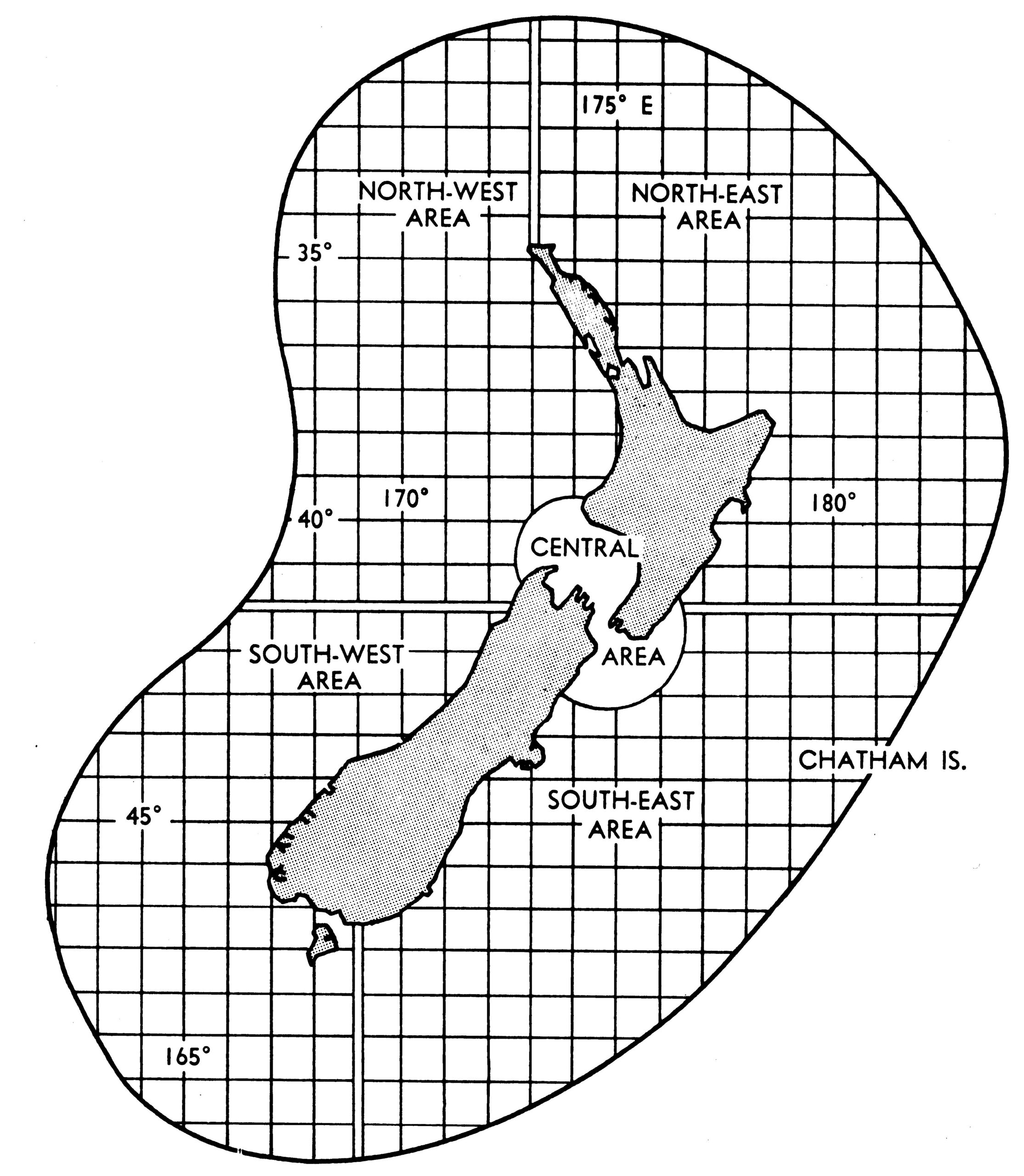 Marine Weather Forecast Areas
Marine Weather Forecast Areas
The above areas extend up to 300 miles off the coast.
All information on radio telephone services can be obtained from the Marine Department Nautical Almanac.
